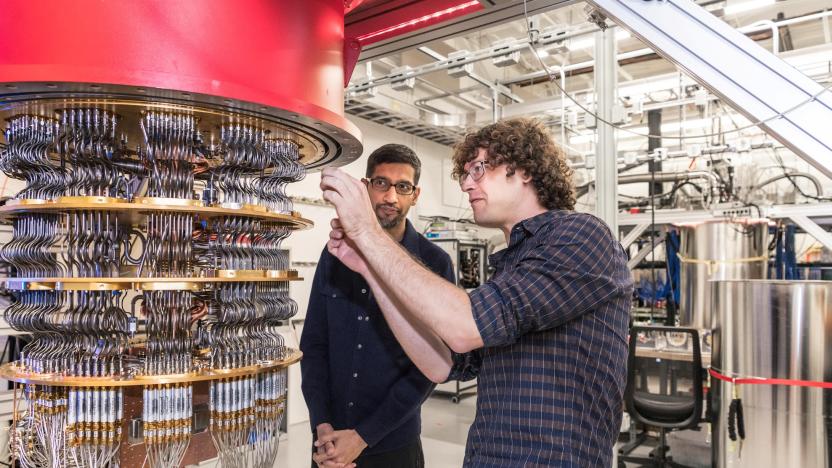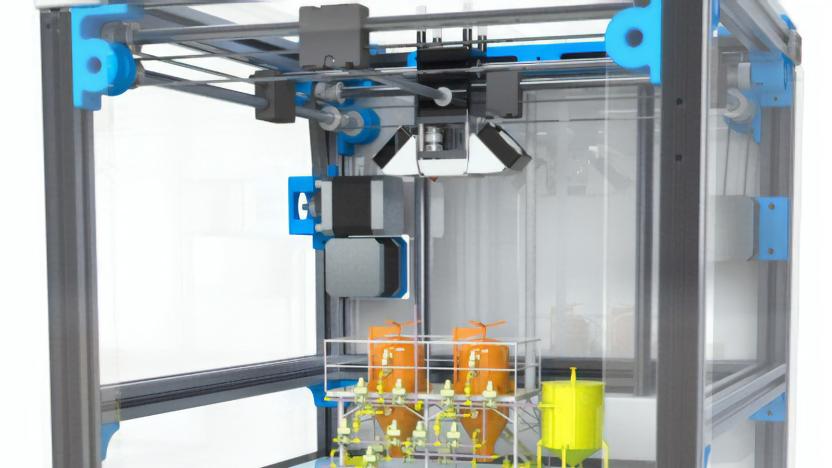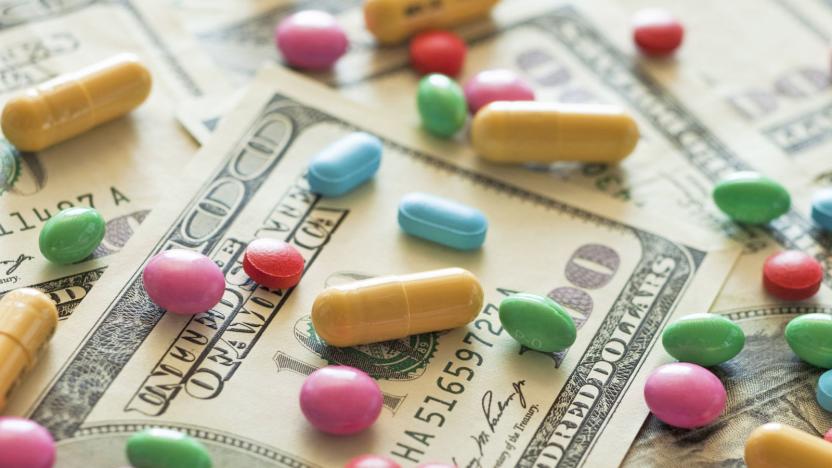pharmaceuticals
Latest

Google's quantum computing division will help develop new drugs
Google’s Quantum AI division is teaming with pharmaceutical company Boehringer Ingelheim to develop new types of pharmaceutical products.

Amazon acquires another healthcare start-up for its Amazon Care program
Amazon is expanding its push into the healthcare industry. After purchasing online pharmacy PillPack last year, the company has now acquired Health Navigator, a start-up that provides online symptom checking and triage tools to help companies direct patients to the right facilities.

Amazon puts former Kindle leader in charge of its pharmacy business
Amazon's entry into the pharmacy business might not have the leader you'd expect. CNBC has learned that the online retailer has picked Nader Kabbani, an executive who helped establish the Kindle self-publishing system and has worked in Flex and logistics, to head the pharmacy team. While he has supply chain and delivery experience, he's new to health care and pharmaceuticals -- an unusual choice given the frequent challenges involved in haggling drug prices and ensuring distribution.

MIT researchers automate drug design with machine learning
Developing and improving medications is typically a long and very involved process. Chemists build and tweak molecules, sometimes aiming to create a new treatment for a specific disease or symptom, other times working to improve a drug that already exists. But it takes a lot of time and a lot of expert knowledge, and attempts often end with a drug that doesn't work as hoped. But researchers at MIT are using machine learning to automate this process. "The motivation behind this was to replace the inefficient human modification process of designing molecules with automated iteration and assure the validity of the molecules we generate," Wengong Jin, a PhD student in MIT's Computer Science and Artificial Intelligence Laboratory, said in a statement.

3D printers could let you produce your own drugs
You might imagine that drug production only happens at gigantic pharma corporations with millions of dollars worth of equipment. However, researchers at the University of Glasgow have unveiled a new process of building "reactionware," or small reactors that can produce drugs, using a $2,000 off-the-shelf 3D printer, Science reports. The new process makes it possible for anyone to fabricate drugs, allowing doctors in developing nations to quickly produce medicines to curtail outbreaks, or even let you produce your own ibuprofen at home.

Old drug gets an absurd price hike to $89,000 per year
Martin Shkreli doesn't have a monopoly on jacking up drug prices. Marathon Pharmaceuticals has received FDA approval for an old drug used to treat Duchenne muscular dystrophy, deflazacort, and in the process has raised the price to ridiculously high levels. You could previously import the generic medicine for about $1,200 per year, but it now costs a staggering $89,000 per year -- "just" $54,000 with discounts and rebates. And since deflazacort (now rebranded as Emflaza) is classified as an orphan drug used to treat a rare disease, Marathon will both have a 7-year exclusive on US sales and a voucher to fast-track a future approval.

Why is Johnson & Johnson getting into startups?
Everyone knows Johnson & Johnson, the conglomerate behind Band-Aid, Tylenol and Johnson's Baby Shampoo. By comparison, very few folks outside the tech industry will have heard of Hax, a Shenzen-based startup incubator. Now, however, the pair are hooking up to find, develop and invest in startups that want to develop a consumer healthcare device. If you're dreaming up a gadget that'll help keep babies safe, ease period pain or seal wounds faster, then applications are due before the end of the year.

ISS experiment will investigate how pills dissolve in space
Space is weird, and it's well known that floating around up there takes its toll on our fragile human bodies. If we're to ever conquer the final frontier, we'll need to do more than eat our greens to keep healthy in alien conditions. A new experiment, soon to be carried out on the International Space Station (ISS), will look at how pills dissolve in microgravity, because astronauts get sick too. It's hoped that results of the "Hard to Wet Surfaces" study, devised by pharmaceutical company Eli Lilly, could lead to the development of better drug formulations that are more effective in space, and possibly on Earth.

23andMe will offer your genetic data to researchers (with your consent)
The genetic samples you send to 23andMe aren't just useful for discovering your roots or potential illnesses -- they could soon help pharmaceutical research, too. The company has struck a deal that opens its DNA research platform to Pfizer's scientists, letting them use the data to quickly find links between genes and certain conditions or traits. The two firms will also partner on genome-level studies and trials, such as one that will ask for 5,000 volunteers to help understand the genetic properties of lupus.

FDA approves Proteus Digital Health's e-pills for dose monitoring
An "ingestible sensor" doesn't sound like the tastiest of snacks, but soon it might be just what the doctor ordered. A tiny microchip which activates upon contact with stomach acid has recently been given the green light by the US FDA. When the sensor is swallowed, an external patch picks up its signal and shoots a message over to whoever it's supposed to. The technology is aimed at tackling an issue known in the healthcare biz as compliance -- or, following instructions. Correct timing and dose are important for many drugs, and lax schedules can be responsible for treatment failures or the development of nasty drug-resistant bugs. Although the pills have only been used in trials, one pharmaceutical heavyweight has already bagged a license to the technology for real-world applications. If you don't like the thought of a belly full of microchips, no need to worry -- the harmless sensors pass naturally after completing their mission.

JP Morgan: Apple is a sector unto itself
JP Morgan's hardware analyst Mark Moskowitz has laid bare exactly how huge Apple has become lately, calling the company an actual "sector," not just a company any more. Of course, on paper, Apple is competing with other computer and device manufacturers like Dell and Samsung, but the numbers just don't make that comparison meaningful any more, says Moskowitz. Apple's stock is by far the largest single stock in the S&P 500 index, and when you compare the company's income to other tech sectors like Pharmaceuticals and Software as a whole, Apple's take actually lines up within the top 10. I'll say that again, because it's important: Apple's income and operations actually compete with whole industries, not just the rest of the PC market. This isn't just the iPhone or the iPad being a new class of device, it's Apple as a whole company creating a tech sector of its own. That's pretty incredible, and if you haven't yet realized how big Apple has gotten in the past few years (as if the $98 billion in cash wasn't clear enough), maybe that's your wakeup call. Now, this may all seem like financial types just making much ado about numbers, but it actually holds quite a bit of meaning, both for Apple and its competitors going forward. Apple's huge growth in the past few years will have lots of consequences, both for the company and the technology industry at large, and we still haven't figured out just what a lot of those consequences will be.

Twenty-six percent of European doctors use an iPad professionally
European readers who visit with their doctors have a good chance of seeing an iPad in use during their appointments. According to a new survey of physicians, 26 percent of 1,207 practicing physicians in Germany, France, Spain, Italy and the UK said that they own an iPad and spend 27 percent of their work online time using the iPad. Manhattan Research carried out the Taking the Pulse Europe study in the fourth quarter of 2011, and found that 40 percent of doctors surveyed plan to purchase an iPad within the next six months. The adoption rate of iPad usage is the same for primary care physicians (general practitioners and doctors of internal and family medicine) and specialists (ophthalmologists, rheumatologists, etc...). What are all of these doctors using their iPads for? The survey showed that they're using them primarily to browse medical articles on the web, watch videos, and look up information. The European doctors are also showing a lot of interest in "using iPads to manage and educate their patients." An article in pharmaceutical blog PMLiVe noted that some large companies like AstraZeneca, Jannsen, and Vertex have created iPad-specific apps targeting healthcare professionals, but that Pfizer had to pull an iPhone app last autumn when errors were found in its Rheumatology Calculator. The situation brought up the question of whether or not pharmaceutical apps should be considered as medical devices, which could slow down the development of new and useful apps in the future.

Big pharmaceutical companies stockpiling iPads for future sales apps
Big pharmaceutical companies spend a lot of time, money and effort trying to attract the attention of doctors in order to get them to use their expensive new products. Doctors, it turns out, are busy people who give the sales reps about 30 seconds of their valuable time -- most of which is taken up signing receipts for the samples they're being given. So now big pharma is turning to the iPad as a way to grab doctors' attention -- even though they apparently don't, yet, have anything to actually show the doctors on those iPads. "During recent conversations with large pharmas, I have heard leadership at several companies make comments similar in nature to 'we have not yet purchased an iPad-based SFA (Sales Force Automation) software product, but we know we will eventually, so we're buying the devices now'," says Eric Newmark, an analyst at IDC Health Insights community. He says "more than one" big pharmaceutical company has told him that they're stockpiling iPads "in significant volume" for later use. The companies aren't even considering looking at alternative devices, believing that Apple's product gives them a better chance of keeping up with the latest technological developments. Apple products are already popular with medical staff, and it can't hurt to present new pharmaceutical products to them using iPads. "With big pharma already stocking up on the hardware, it seems likely that the apps they want will follow," says Newmark. Apple's absence in the pharma market is likely to rapidly change with Apple "likely to quickly become a dominant hardware vendor in the space." [Via The Mac Observer/MacOS Ken]

Vitality GlowCap review
The Vitality GlowCap concept's been floating about for years now, but it still slightly blows our minds -- you stick a tiny, battery-powered wireless computer on top of your pill bottle, which reminds you to take your medicine on time. Well, it turns out they aren't exactly a concept these days, as you can buy one for $10 with a $15 monthly plan, and we've actually spent the past month living with the chirping, glowing, AT&T-connected device, keeping a journal all the while. After the break, find out what a life-saving nag feels like. Note: Amazon's actually out of stock at the time of this writing, but Vitality says a new shipment should arrive tomorrow. %Gallery-114026%

Bluetooth-enabled meds to enter European bloodstreams
One of the great things about miniaturization is that it allows us to swallow things that a few short years ago were just a wonderful dream, from microprocessors to bowel scanners. Now a Swiss pharmaceutical company called Novartis AG is developing the Ingestible Event Marker (IEM), a chip that can be embedded in medication and, upon being activated by the patient's stomach acid, will send the doctor biometric data that gauges the drug's effectiveness (including heart rate, body temp, and body movements) via Bluetooth. The plan is to introduce the technology to monitor transplant recipients, although it could be expanded to other uses as well. If bioequivalence tests demonstrate that the device doesn't alter the effects of the pills, you could see 'em submitted for regulatory approval in Europe in the next 18 months.

Microfluidic chip does 1,000 parallel chemical reactions, looks glorious
We'd never considered a career in biochemistry until we saw this wild beast of a chemical microprocessor. Microfluidic chips, used to test chemical reactions and properties, have been known to be smaller, but they've never before been quite this powerful. The result of a joint study between California State University, UCLA and China's Wuhan University, the "integrated microfluidic device" is capable of performing 1,024 in situ chemical reactions at a time, making the researcher's life, oh, about 1,024 times easier. Most importantly though, costly enzymes previously used for a single test can now be split up into hundreds and tested simultaneously, which should pave the way for exponentially faster and easier medical research. It's not clear when these will be widely available, but we're sure PhDs around the world are trying to order one as we speak.[Via medGadget]






